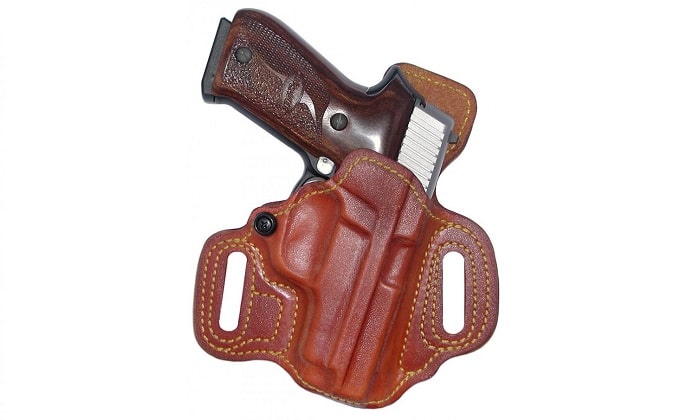
Holsters made of leather adapt to the firearm after a break-in. The leather construction will need some time before it can naturally conform to the shape and form of any firearm. Leather is a natural material and it reacts to its environment, adapting to it slowly with constant use.
Leather holsters work the same way as any case wherein it will need some time getting used to for the firearm to fit like a glove. It may seem like the gun does not fit properly, but a proper break-in will make it the perfect fit. Here’s how to break-in a leather holster.
There are three proven ways on how to break-in a leather holster. There are a few additional materials needed for the break-in, depending on the method.
Plastic Bag Method
This method will require the leather holster, the gun, and the plastic bag.
Step 1: Insert the gun in the plastic bag. This is done to increase its mass, reduce friction, and to protect the gun from any scratches.
Step 2: Place the gun in a plastic bag inside the holster. This may take quite some time and force, but continue twisting and turning until it fits fully in the bag.
Step 3: Let the firearm sit in the holster overnight.
Step 4: After letting it sit overnight, withdraw the firearm from the holster and remove the plastic bag.
Step 5: Insert the gun in the holster and notice how it now fits more precisely than the previous day. You may stop at this step if you now find the gun to perfectly fit the holster.
Step 6: If it is still hard to holster the firearm around, repeat the process. Remember that they may be some retention, so do not overdo the process to avoid having a loose bag.
Leather Strap Break-in Method
This method will only require the leather holster and the gun. It will also take some time and some force.
Step 1: Grab the leather holster. Use the thumb and the index finger to grab the strap outwards.
Step 2: While holding the leather holster, insert the firearm inside. Push the firearm with some force. Simultaneously pull the strap as the firearm is pushed. Pull the strap in opposite directions, with gentle sideward and twisting motions. Note that pulling it too far or twisting it excessively can harm the leather.
Step 3: After some time, try to pull the strap around the gun. At this point, it should be easier to fit the gun with the straps.
Step 4: You may repeat the process if the straps are still too far from being joined around.
Wet Method
This method needs the leather holster, the gun, a plastic bag, and the break-in kit that contains the liquid suitable for leather material.
Step 1: Take out the break-in kit. Soak the brush with the break-in liquid. Apply the soaked brush to the key points of the holster. This may be the trigger guard and the straps. Rub the brush on these leather areas couple of times. This will soften and distort the original leather molding.
Step 2: Insert the gun in a plastic bag to increase its size, reduce friction, and to protect the gun from any scratches before placing it inside.
Step 3: Place the gun in a plastic bag inside the treated holster. This may take some time and force to fully insert the gun in the bag. Continue twisting and turning so it can be accommodated inside.
Step 4: Leave the gun inside the holster overnight.
Step 5: After letting it sit overnight, take out the wrapped gun from the holster and remove the plastic bag.
Step 6: Insert the gun in the holster. Notice how it is now a lot easier to insert the gun, and now has a more precise fit.
Step 7: If it is still difficult to put the gun inside, repeat the entire process.
Knowing how to break-in a leather holster will save time and energy into putting the firearm in place. The leather holster will need some time getting used to, but the given methods will ease out the owner and let the firearm slip with ease. A new leather holster is meant to be expanded with the conformity of the gun, and the break-in will let the case slowly adapt to homing the gun for a long time.